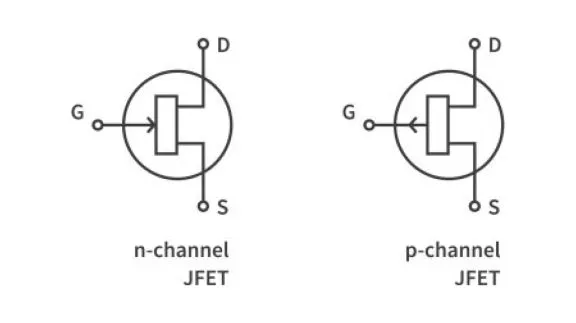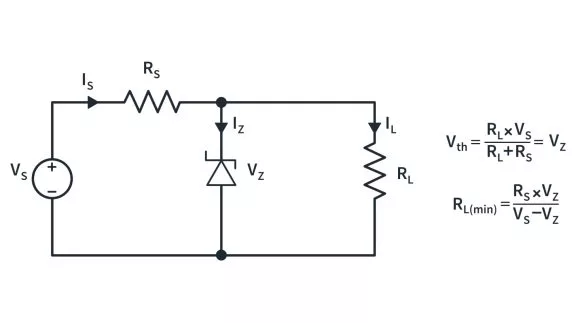How a MOSFET works at the Semiconductor level
Published
MOSFETs are Metal Oxide Semiconductor Field Effect Transistors. MOSFETs act like switches by varying the voltage on one terminal, the gate, changing the resistance between the other two terminals - the source and drain.

Let’s discuss the makeup of a MOSFET, using an NMOS in enhancement mode as an example.

With an NMOS, you have a p-type substrate that you then create two heavily doped n-type regions. These two regions are called the source and the drain region. With our knowledge of semiconductors, you can see that you’re creating a PN junction between the substrate and these two regions. On top of the substrate, an oxide, which acts as an insulator, is deposited. Then, on top of that, a layer of metal is deposited, which finalizes the gate structure. Now you can see where the Metal Oxide Semiconductor in MOSFET comes from. But it may seem strange to have your gate being completely electrically isolated from the rest of the circuit. This is where the FET term comes in. Even though there isn’t a direct electrical connection, the voltage on the gate creates a field effect.

As we know from our studies about diodes, at a PN junction, a depletion region is naturally created even when there are no electric fields. This is the natural state when the gate voltage is 0, and the MOSFET is operating in the “cutoff region”. This is an operating region, not a physical region, which can be confusing.

If you increase the gate voltage, that positive voltage will attract electrons in the substrate up to the area between the source and drain, an area called the channel region, this time a physical region. As the electrons gather in the channel, the depletion region expands and eventually there is a depletion region across the entire channel. Besides this depletion region, an inversion layer of electrons starts to form at the source and, as the voltage increases, that inversion layer expands toward the drain. However, at this point, when the gate threshold is not yet equal to the threshold voltage, free carriers do not yet connect all the way from the source to the drain. This area of operation is called the saturation or pinch-off region.

However, as the gate voltage continues to increase, increasing the electric field, and finally passes the threshold voltage, electrons from the source and drain flow in and form an inversion layer of electrons that connect the source and drain regions. Now that they’re connected, if a voltage is applied across the source and drain, a current will flow. The MOSFET is now operating in the linear or triode region.
This is how, using a metal oxide semiconductor structure, you can use the field effect of a gate voltage to create a semiconductor switch. And to get a PMOS device, you have an n-type substrate and heavily p doped wells for your source and drain, and the current carriers are holes instead of electrons. Also, I mentioned earlier that this is an example of an enhancement mode device. It’s called an enhancement mode device because an increased gate voltage “enhances” the conductivity of the channel. Some MOSFET’s are designed so that they naturally have a conductive channel and a negative gate voltage is needed to actively turn it “off”, and these are called depletion-mode devices.

Conceptually, that’s all you need to know to understand the mechanics behind MOSFETs, everything basically stems from those operating principles. But there are a few things that I’d be remiss to not mention that can affect their operation. First is the channel length, L - the distance between the source and drain. Second is the channel width, W - which is how long the source and drain are. These two features are very important when it comes to designing a MOSFET. Third, in this example, we assumed that the substrate, or base, was connected to ground. That’s usually the case but not always. No matter what, you need to make sure that the source and drain are at equal or higher voltage potentials than the substrate or else you will forward bias that PN junction and get an unwanted current.
This topic can be surprisingly confusing and I personally believe that it’s in large part due to the amount of terms, especially those that stand for the same thing, such as linear, triode, and ohmic to describe the same region.
Tutorial FAQs
Why are the N-type regions in a semiconductor device often represented with a "+" sign?
The "+" signs indicate that these regions are heavily doped. While not strictly necessary, this convention helps distinguish heavily doped areas from lightly doped ones.
Will the threshold voltage of a MOSFET change with variations in the voltage between the source and drain?
No, the threshold voltage remains constant regardless of changes in the source-drain voltage. However, the source-drain current may change. Increasing the source-drain voltage is akin to increasing water pressure in a faucet: it does not open the faucet more, but if the faucet is slightly open, more water (current) will flow up to a certain point. This relationship is explained in more detail in this video: MOSFET Behavior.
How does the inversion layer form in a MOSFET if the substrate region has become non-conductive due to the depletion layer?
Although the depletion layer itself is non-conductive, when the voltage is sufficient to attract free carriers, an inversion layer forms. The inversion layer forms as the gate voltage increases, causing the depletion layer to move downward and the inversion layer grows between the gate and the depletion layer. Then these electrons are available to be pulled from the source and drain or through the less-than-ideally conductive depletion layer.
Is the structure of a MOSFET symmetrical, and can the source and drain be interchanged?
Yes, many MOSFETs are symmetrical, and the source and drain can be interchanged. However, some MOSFETs may have additional features, such as a flyback diode or specific internal connections, which prevent interchangeability. Always refer to the manufacturer's specifications for details.
How is a MOSFET different from a relay, given that both seem to perform similar functions?
While MOSFETs and relays both serve as switches, they operate differently. Solid-state relays incorporate MOSFETs and other components to handle both AC and DC loads and provide electrical isolation. A MOSFET alone cannot perform all the functions of a mechanical relay without additional circuitry.

Get the latest tools and tutorials, fresh from the toaster.














